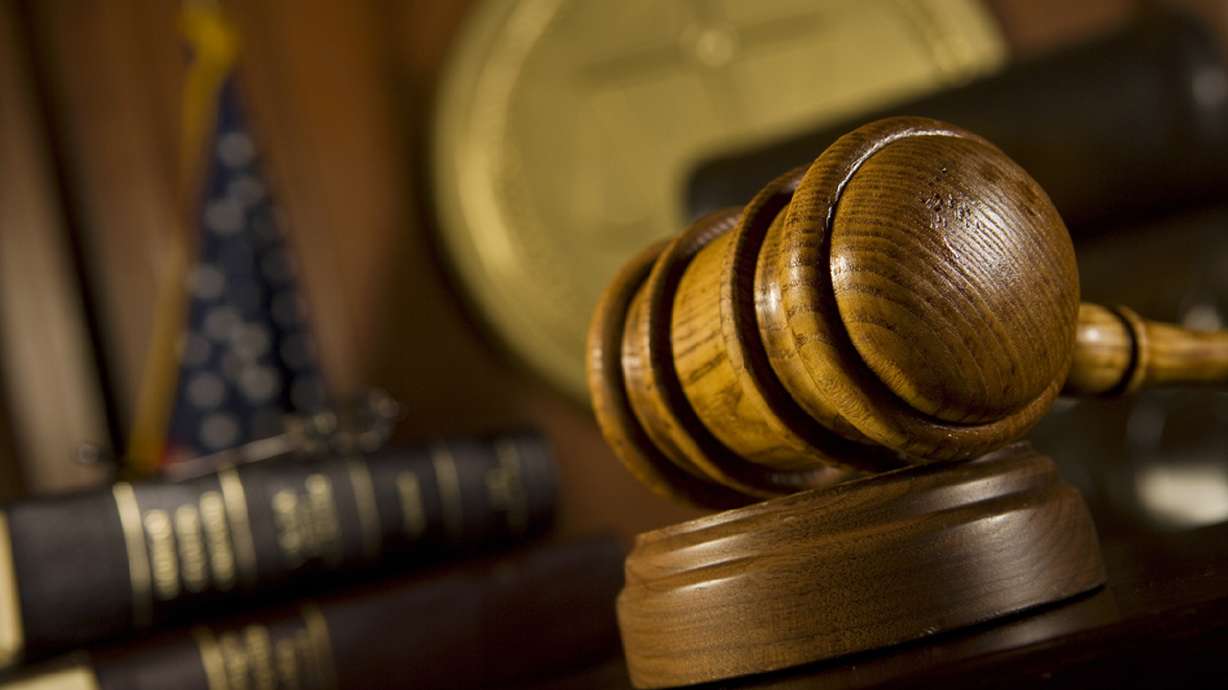Estimated read time: 4-5 minutes
This archived news story is available only for your personal, non-commercial use. Information in the story may be outdated or superseded by additional information. Reading or replaying the story in its archived form does not constitute a republication of the story.
SALT LAKE CITY — It's one of the most dramatic moments of a criminal trial: when a victim is asked to point out the person who committed the crime against them.
But officials with the Rocky Mountain Innocence Center also say that kind of identification, while great for courtroom theater, is mostly unreliable.
"The mind and memory really aren't reliable when you look at the science of it," said Marla Kennedy, the center's executive director.
Bad eyewitness identification is the leading cause of wrongful convictions in the United States, she said.
"Over 70 percent of exonerations by DNA were due to faulty eyewitness ID," Kennedy said.
Over 70 percent of exonerations by DNA were due to faulty eyewitness ID.
–Marla Kennedy, Rocky Mountain Innocence Center
Recently, the Rocky Mountain Innocence Center held a two-day training session with the Unified Police Department to discuss the best techniques for questioning eyewitnesses.
"This was a no-brainer for us," said Salt Lake County Sheriff Jim Winder. "We are all on the same page here. … Law enforcement and the Innocence Center want the same thing — the right person convicted of the crime."
Ronald Cotton case
The Innocence Project, a national group, often uses the example of Ronald Cotton and Jennifer Thompson-Cannino to drive home their point.
In 1985 in North Carolina, Cotton was convicted of raping Thompson, largely due to her eyewitness testimony. During a retrial in 1987, she again pointed to Cotton as her attacker and he was convicted again. But DNA tests would later prove otherwise, and Cotton was exonerated in 1995 after spending more than 10 years in prison.
According to the Innocence Project, "Cotton and Thompson-Cannino are now good friends and leading advocates for eyewitness identification reform."
Utah case
In Utah, Harry Miller was convicted of robbing a woman at knife point in Salt Lake City in 2000 due largely to an eyewitness. After serving four years in prison, he was exonerated.
Unified Police Lt. Lex Bell said it's a common scenario for investigators: They'll interview witnesses at a bank robbery or another crime, and even though there could be six witnesses, sometimes all six will give a different suspect description, with age and height often being the biggest variables. Sometimes witnesses to the same crime will even give different skin colors of the suspect.
When a person is being traumatized or in fear of their life, "You don't see and hear things like you normally would," Bell said.
New techniques
Some of the new techniques being taught by the Rocky Mountain Innocence Project include detectives no longer laying six pictures in front of a victim and asking them to pick out the suspect.
"When you're given a photo array of six people, you don't focus on picking who you saw, you start picking who you think you saw against one another in the photos. You're comparing 1 to 2, and 2 to 3. So you're not focused on who you saw, you're starting to compare them to each other," Kennedy said. "Three's a difference between recall and recognition."
The center recommends showing victims the pictures one at a time, and not giving the victim very long to look at them. The victim also can only look at the pictures twice. If they can't identify a suspect after that, detectives will wait to conduct another photo lineup later.
"Because if you can't pick someone in the first 10 seconds, the accuracy goes down 8 percent," Kennedy said.
Furthermore, the center recommends the person who administers the photo lineup shouldn't be the lead detective on the case, but rather a person who doesn't know who the suspect is. That way, the officer doesn't give any "unknown cues" to pick a particular person, Kennedy said.
"It's the way that we build up the interview with that individual and the way that we present our photo lineups," Bell added on the recommended techniques.
But Bell also noted that with the advances in forensic science and DNA technology over the past decade, it's rare now to solely rely on an eyewitness account to solve a case.
"That is almost unheard of anymore. There has to be something more. We have to collaborate that with additional evidence," he said. "There's so much reliance on other evidence now, DNA and fingerprints and touch evidence, that it's not quite as important as it was years ago when mistakes happened."
Kennedy and the Innocence Center are hoping that police agencies statewide will adopt the best-practices techniques that they are recommending.









